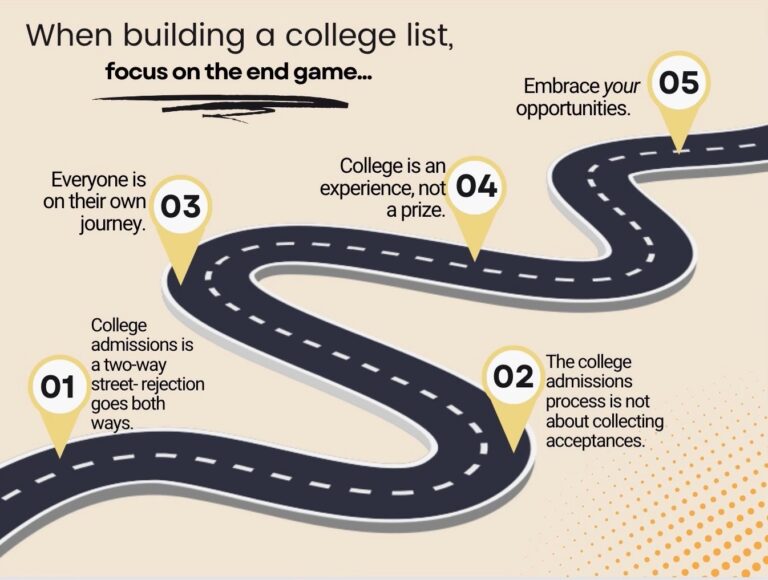
With nearly 4,000 four-year colleges in the United States alone, creating a college list can be simultaneously exciting and overwhelming. In the process of identifying universities that fit their interests and goals, many students initially default to schools they already know, perhaps through their families, older friends, or sports. Familiarity is a great starting point, but any given college can be a great fit for one person and not another. In many ways, the process of creating a strong, balanced college list resembles embarking on a major shopping trip: narrowing the extensive options requires students to explore, prioritize, and “try on” different schools and types of schools.
As with any endeavor, it’s important to remain mindful of the objective of the college application process: to end up with solid choices and enroll at one good-fit college. Getting into college may feel like the culmination of a student’s high school experience, but the college application process is neither about collecting acceptances nor is it a referendum on a student’s achievements. Students may perceive acquiring a certain number of acceptances or admission to particular colleges as “validation” of their efforts. Conversely, students often feel that not getting in somewhere negates their “hard work throughout high school.” However, denials do not discount a student’s effort or achievement—the reality is that many colleges could fill their classes multiple times over with highly-qualified applicants. Rather than a testament to an applicant’s value as a student or person, applying to college is a mutual selection process through which students and schools attempt to satisfy certain needs and wants. To that end, students should be mindful of the fact that the application process is a two-way street and that they, too, have the power to say no. Of the 4,000+ options, approximately 8-12 schools will be fortunate enough to be included on a student’s list. And, after the admissions decisions come in, the student will eventually reject all but one school. Simply put, students can and should expect to get “rejected” during this process—it’s mutual, and it’s certainly not personal.
When compiling a college list, students should ask themselves if they realistically see themselves being happy and successful at every university they’re considering. If the answer is no, the school should come off the list. It’s perfectly natural to desire some colleges more than others, and applicants seem inevitably drawn to the most selective colleges on their lists. Some students find it challenging to identify “target” and “likely” schools, but few schools are so unique that less-selective alternatives with comparable characteristics don’t exist. A student may dream of becoming a Longhorn, for example, but with UT-Austin’s out-of-state acceptance rate hovering around 8%, students would be wise to apply to similar, but less-selective, institutions. There are plenty of high-quality large public flagship universities like UT-Austin, and many have warm weather and/or are located in state capital cities.
A well-curated, thoughtful list sets the tone for a successful and low-stress college application process. Students and parents who are open to possibilities, remain mindful of the objective of the process, and more focused on fit than name brand or “dream” schools are always much happier with their outcomes. And, if they’re still pining after that dream school in a year or two, they can apply to transfer, which is almost always easier than getting in as a first-year. The fact that this a somewhat rare occurrence further shows that students can be happy at many different schools that offer their desired criteria.
